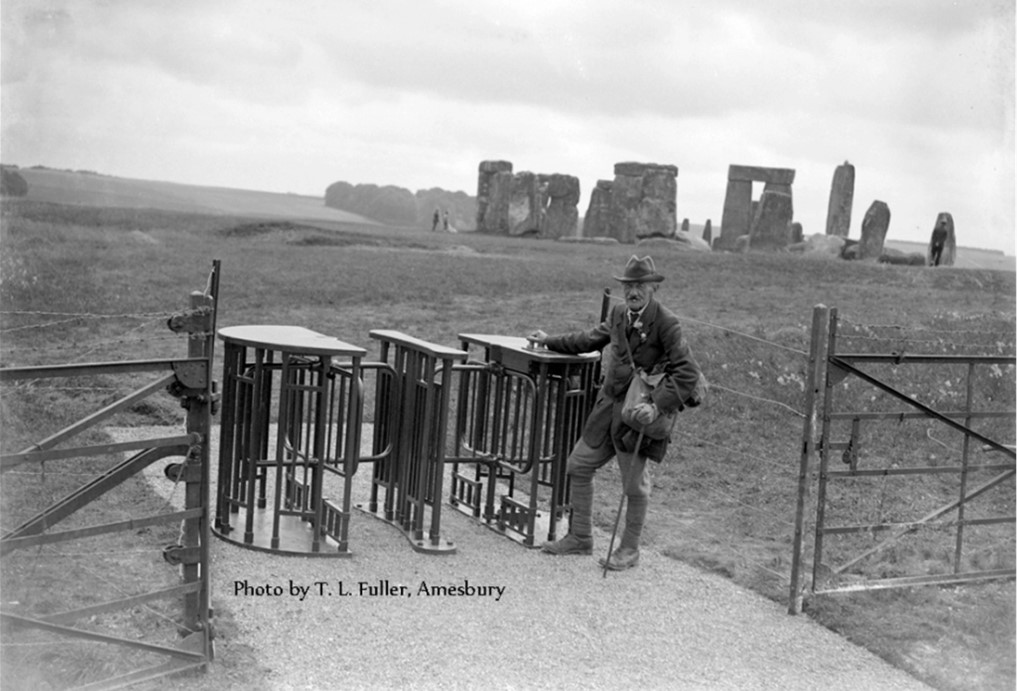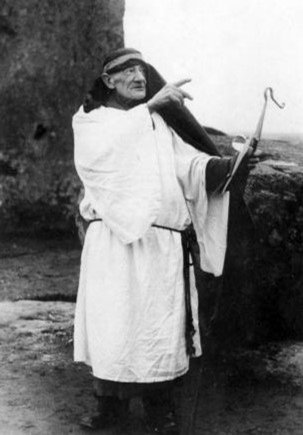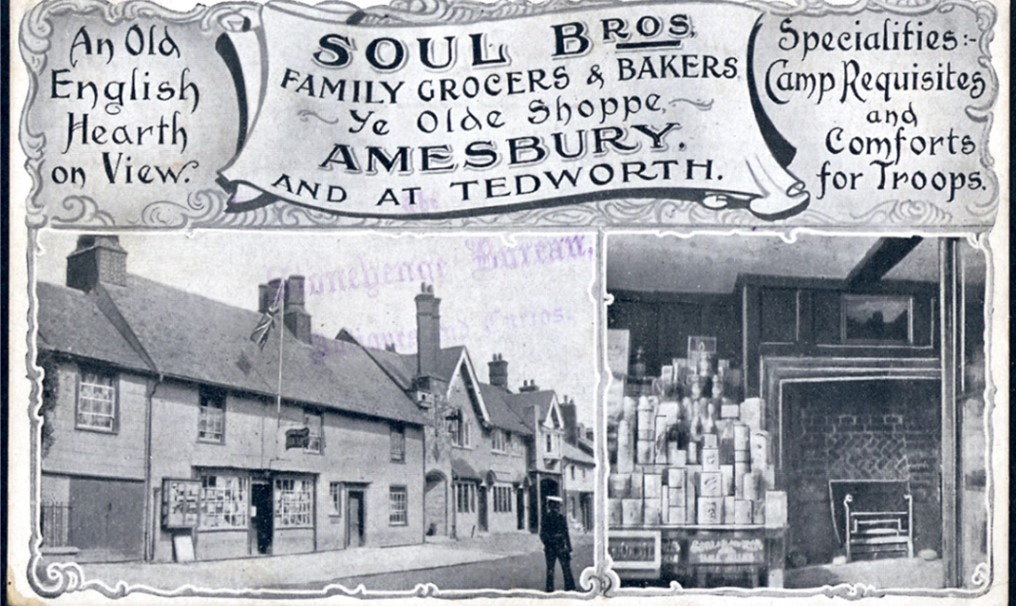By Maureen Storey
At sunrise on 14 Jun 1942 five druids, the representatives of the different organisations that comprised Druid Unity, met on the Double Circle near Stonehenge to celebrate the Summer Solstice. During WW2 the Druids had suspended their mass ceremonies and only on special occasions did a small group of delegates meet to take part in one of their rituals. The 1942 ceremony was held in order to carry out the last wishes of John Soul of Amesbury, a well-known Druid, local historian and Stonehenge campaigner. In accordance with John’s wishes, his ashes were scattered to the four winds as part of the requiem was read and then this was followed by the solemnisation of the Druid communion of the four elements. Who was John Soul and why was he honoured with this ceremony?
John’s family originated in Olney, Buckingham. His grandfather Richard Soul was born there in 1807. He married Anna James in 1836 and their three sons, John James, Edward and Richard were all born in Olney between 1837 and 1842. By 1861 Richard and his family had moved to Shaftesbury, where he ran a grocery shop and tea dealership. In 1871 his business was in Fisherton Anger but by 1875 he and all his sons were in business in Amesbury: directories show Richard snr and Edward as grocers and bakers, John James as a coal merchant and Richard jnr as a draper. Edward Soul married Kate Highman in 1870 and remained in Amesbury until his death in 1880. Richard jnr married Harriet Clarabut in 1871 and by 1891 had moved to Totnes, where he ran a draper’s shop in the High Street. Richard snr remained in Amesbury until he retired, when he went to live with Richard junior and his family in Totnes.
Richard’s oldest son John James Soul married Mary Jane Child in 1866 and John, their first child, was born on 20 Aug 1866 in Shaftesbury, Dorset. By 1881 John James and Mary Jane were living in Corsham, Wiltshire, where they had opened a grocery shop. After his father’s death in 1882, John worked in other grocery establishments around the area. The 1891 census found him working as a grocer’s assistant in Poole, Dorset, but by 1901 he had moved to Amesbury and taken over the family business there. In 1906 John married Marie Haylock, a soldier’s daughter who had been born in Ireland, and the couple had two children: John who was born in 1911 and died in infancy and Marie Patricia who was born in 1912.
While the family business continued to prosper under John, it left him with sufficient time to follow his other interests. He became a well-known and well-liked, if somewhat eccentric figure about the town. He was reputed to have known everything there was to know about the history of Amesbury and he published two short guides to the town, one in 1923 and the other in 1926 (the latter was entitled Amesbury Historic and Prehistoric). H also took an active role in the local scout group. But his consuming passion was Stonehenge. His first visit to the site was as a child of five in 1871 and even as a child he was fascinated by the stones, a fascination that only grew with time. After moving to Amesbury, his visits became more and more frequent and he became a regular, though increasingly more eccentric, figure around the site. One of his major concerns was freedom of access to the site, which at the time stood on private ground and had been fenced off by the landowner to prevent damage to the stones. Eventually a paying turnstile was introduced to allow access, and although he complained vociferously about the necessity for this, John was the proud possessor of the second ticket issued at the turnstile.

Around 1920 John joined An Druidh Uileach Braithreachas, a druid order set up by George Watson MacGregor Reid. There were and are still many different orders of modern Druids, but they can be broadly split into two groups: cultural Druids and esoteric Druids. Although both groups celebrate events such as the solstices, cultural Druids are only expected to preserve and practice justice, benevolence and friendship and while their iconography is based on Iron Age Celtic paganism, they are forbidden to engage in religious discussion at their meetings. On the other hand, esoteric Druid orders, such as the one John joined, practise Druidism as a religion, and he regarded Stonehenge as a holy site.

During the 1920s and 1930s John could often be seen at Stonehenge lecturing the growing numbers of visitors about the stones and the mysteries surrounding them. He published two pamphlets about the monument, the first being a 42-page booklet entitled Stonehenge and the Ancient Mysteries (1927) and the second was The Mystery of Stonehenge (1930). He dressed the part, usually as a shepherd, carrying a crook (he like to be known as The Shepherd of Stonehenge), and sometimes in Druid robes, though at one solstice celebration he was described as wearing a topi, white twill trousers tucked into puttees, with a haversack over one shoulder and carrying a shepherd’s crook and an oak twig with leaves.

According to some who remembered John in his later years, in the end his passion of Stonehenge turned into an obsession that saw him making daily visits to the site, which apparently did not go down well with his wife, who was said to disapprove of his involvement with the Druids.
